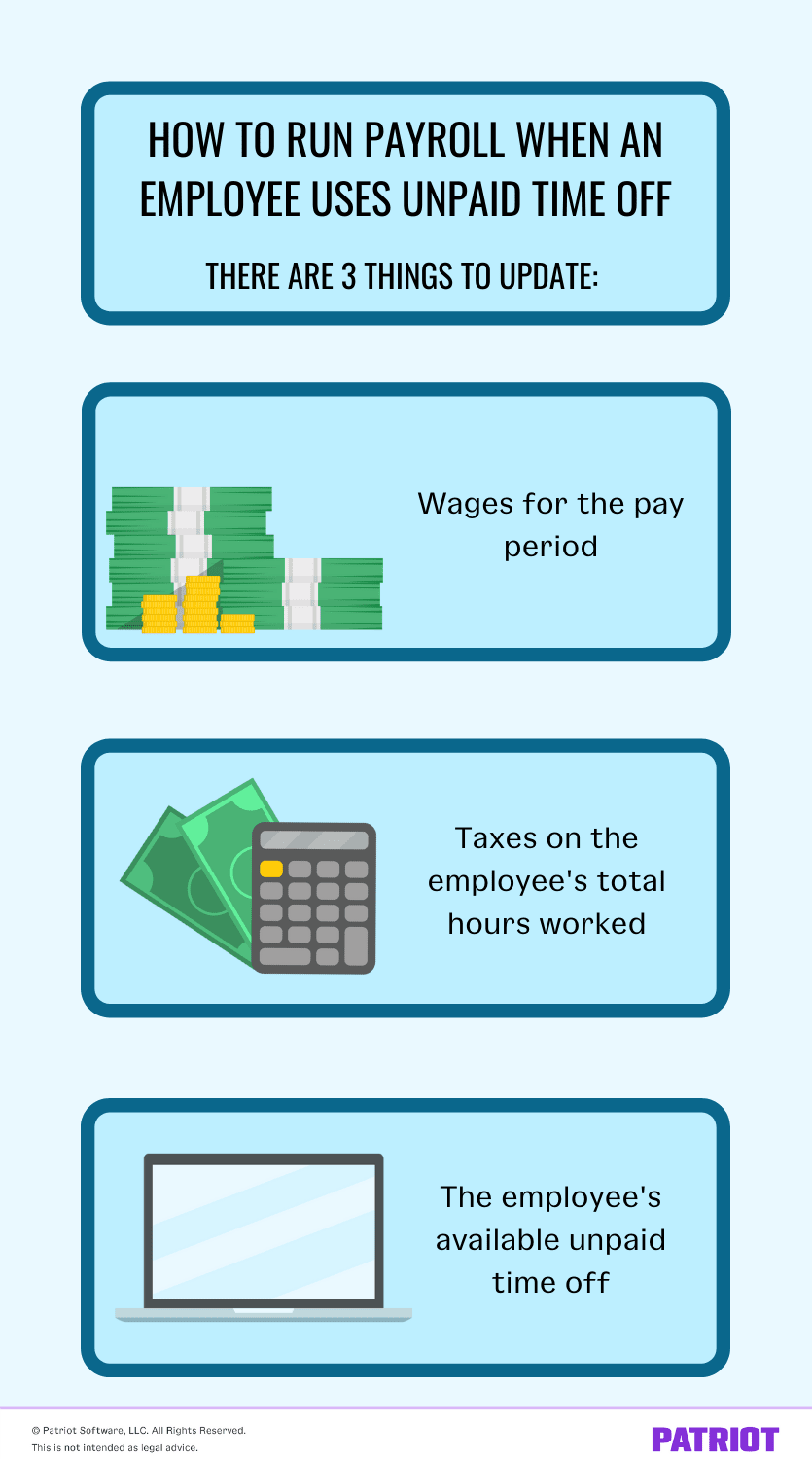Relating to personal business staff, 77% have entry to paid sick go away and 77% have entry to paid trip time. However, what occurs in case you can’t afford to supply your workers paid break day (PTO)? Or, what in case your workers burn up all of their PTO and have to take break day from work? For both of those conditions, you might take into account providing unpaid break day.
Earlier than providing workers unpaid break day, it’s good to know in case you legally can. Some state legal guidelines may require you to supply paid break day. And in case you provide unpaid break day, it’s good to create an unpaid break day coverage for small enterprise.
Learn on to be taught extra about unpaid break day, together with associated legal guidelines, what to incorporate in your coverage, and the way it impacts payroll.
What’s unpaid break day?
Unpaid break day (UTO) is time away from work an worker can take with out pay. Workers can use UTO in the event that they’re sick, wish to take a trip, or produce other private obligations. Employees also can take an unpaid go away of absence from work, which is an prolonged time period away from work.
Employers can provide unpaid break day along with or as an alternative of paid break day.
Paid break day is when workers earn their common wages after they take off from work. Employers normally give workers a set variety of paid break day hours that they’ll use in a calendar 12 months. When the worker makes use of up all of their paid break day and must take break day from work, they may be capable of use unpaid time.
Some employers resolve to not give workers paid break day. Employers may present UTO to hourly staff, part-time workers, or their total workers.
Unpaid break day legal guidelines
Earlier than deciding to supply workers UTO, familiarize your self with paid sick go away legal guidelines by state.
There are 12 states, and Washington D.C., that require qualifying employers to supply workers a sure variety of paid sick days.
The states that require employers provide paid sick go away are:
- Arizona
- California
- Colorado
- Connecticut
- Maine
- Maryland
- Massachusetts
- Michigan
- Nevada
- New Jersey
- New Mexico
- New York
- Oregon
- Rhode Island
- Vermont
- Washington
- Washington D.C.
Moreover, there are a number of cities and counties with obligatory paid sick go away legal guidelines. Test along with your locality for extra info.
Creating your unpaid break day coverage
When you resolve to supply your workers UTO, it’s good to have a coverage in place. Your break day with out pay coverage ought to specify info like:
- Whether or not additionally, you will provide paid break day
- Which workers have entry to paid (if relevant) and unpaid break day
- The variety of unpaid days workers can take
- How workers can request break day
Whether or not additionally, you will provide paid break day
Your coverage ought to tackle whether or not you might be providing unpaid break day after an worker makes use of their paid time or as an alternative of paid time. When you provide paid break day, embrace a separate paid break day coverage, too.
Which workers have entry to UTO
Your unpaid break day coverage also needs to specify which workers you’re providing unpaid break day to.
If you’re providing paid break day to some workers and UTO to others (e.g., part-time vs. full-time workers), state it in your coverage.
Variety of days workers can take
Once you provide unpaid break day to workers, you might resolve to cap the variety of days workers can take off in a calendar 12 months. Or, you may let workers take off as many days as they need.
State whether or not you may have a cap (e.g., 80 hours of UTO per 12 months) or not in your coverage.
How can workers request break day?
Though you don’t need to pay workers who don’t present as much as work, you must have a system in place for taking break day.
Your coverage ought to tackle how workers can request break day, how a lot heads-up they should provide you with, and what occurs if a couple of particular person calls off.
For instance, you may request that workers put their request in writing, present one month’s discover for greater than two days off at a time, and prioritize requests based mostly on a first-come, first-served foundation.
Unpaid break day and payroll
So, how do you run payroll when an worker makes use of UTO?
There are three issues it’s good to replace:
- Wages for the pay interval
- Taxes on the worker’s complete hours labored
- The worker’s accessible UTO (if in case you have a cap)

1. Wages for the pay interval
The purpose of providing workers UTO is to allow them to take break day from work with out getting paid. Your payroll ought to mirror their wages for fewer hours labored.
Multiply the worker’s hours labored by their hourly charge. Don’t embrace the hours the worker used as unpaid break day.
If the worker is salaried, you might have to calculate their hourly charge. To do that, divide the worker’s gross wages in a pay interval by the variety of hours they usually work. Then, you possibly can multiply their hourly charge by the variety of hours labored.
Let’s say you may have a salaried worker who usually earns $1,000 each week for working 40 hours. They use eight hours of unpaid break day and labored 32 hours in the course of the week.
First, calculate the worker’s hourly charge by dividing their weekly gross wages by 40 ($1,000 / 40). The worker’s gross hourly charge is $25.
Now, multiply the worker’s hourly charge of $25 by their complete hours labored, which is 32 ($25 X 32). The worker’s gross wages for the week are $800 quite than their regular $1,000.
2. Taxes
When you’re used to withholding the identical quantity for taxes out of your workers’ wages, it’s good to make some modifications after they take unpaid break day.
When an worker works fewer hours and earns decrease wages, their tax legal responsibility decreases. Ensure that to recalculate the payroll taxes you withhold based mostly on their new wages.
3. Accessible unpaid break day hours
Did you resolve to set a cap on the variety of unpaid hours an worker can take off from work?
In that case, ensure that to subtract the variety of used hours from the worker’s remaining accessible UTO hours.
Make issues simple on your self. If an worker takes unpaid break day, merely enter their hours labored into Patriot’s payroll software program, and our software program will calculate wages and taxes. Why not begin your free trial in the present day?
This text has been up to date from its unique publication date of December 16, 2019.
This isn’t supposed as authorized recommendation; for extra info, please click on right here.


